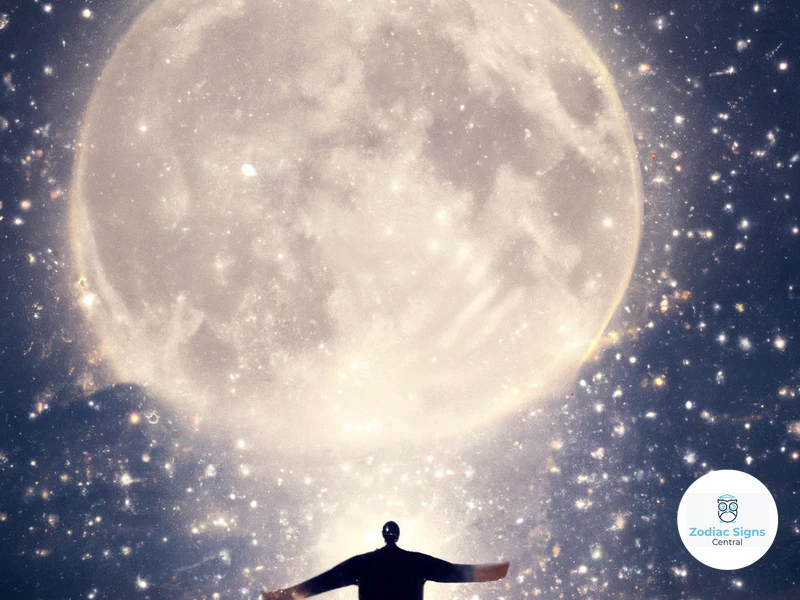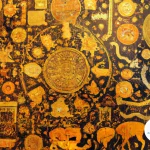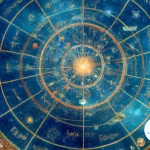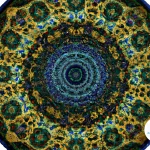The moon has always captivated humanity, inspiring myths, art, and even emotions. Its enigmatic presence in the night sky has led many to ponder its influence on our emotional well-being. While the idea may seem mystical, there is growing evidence that suggests a connection between the moon and our emotions. This article explores the intriguing relationship between the moon and emotional well-being, delving into the role of the moon in astrology, its influence on water, the impact of different moon phases on emotional states, and practical tips on harnessing the moon’s power for nurturing our emotional health. Get ready to embark on an exploration of the moon’s fascinating influence on our inner world.
The Connection Between the Moon and Emotions

The moon’s connection to emotions is a subject that has intrigued scholars, philosophers, and astrologers for centuries. One area of exploration lies in astrology, where the moon is believed to play a significant role in shaping our emotional landscape. Astrologically, the moon represents our deepest emotions, inner selves, and instinctual responses. It governs our subconscious mind and influences how we process and express our feelings. When the moon is in alignment with other celestial bodies, such as the placement of our Sun sign, it can enhance certain emotional traits and tendencies. For example, someone with a Leo Sun sign may experience amplified confidence, leadership qualities, and creativity when the moon is harmoniously linked to their inherent traits. By understanding the role of the moon in astrology, we can gain insights into our emotional inclinations and navigate our inner world more consciously.
The Role of the Moon in Astrology
In astrology, the moon holds a profound significance and is considered one of the most influential celestial bodies. It represents our emotions, instincts, and subconscious mind, providing valuable insights into our inner workings. The moon’s placement in our natal chart plays a crucial role in understanding our emotional landscape and how we respond to the world around us. Each zodiac sign is associated with a different elemental energy and emotional expression, and the moon’s placement within these signs can illuminate our unique emotional patterns and needs. For example, someone with their moon in a fire sign like Leo may experience emotions more passionately and expressively, displaying qualities such as confidence, leadership, and creativity. On the other hand, someone with their moon in an earth sign like Taurus may exhibit grounded and steady emotional tendencies, valuing security and stability. By analyzing the moon’s placement in relation to other elements of the birth chart, astrologers can gain valuable insights into an individual’s emotional strengths, vulnerabilities, and potential areas for growth. Understanding the role of the moon in astrology allows us to deepen our self-awareness, cultivate emotional resilience, and navigate our relationships and life experiences with greater clarity and understanding.
The Moon’s Influence on Water
The moon’s influence on water is a fascinating aspect that sheds light on its potential impact on our emotions. It is well-known that the moon’s gravitational pull affects Earth’s tides, which are primarily driven by the interaction between the moon, Earth, and the ocean waters. The moon’s gravitational force creates subtle but noticeable changes in the water levels, resulting in the ebb and flow of the tides. This phenomenon demonstrates the moon’s ability to exert a gravitational force on Earth’s bodies of water. Similarly, our bodies are made up of about 60% water, and it is believed that the moon’s gravitational pull may also have an effect on the water within our bodies. Although scientific studies on this topic are limited, anecdotal evidence suggests that some people may experience heightened emotions, sensitivity, or fluctuations in mood during specific lunar phases. Additionally, some individuals report feeling more connected to their intuition and subconscious during these times. While the influence of the moon on water is an ongoing area of research and debate, the idea of a moon-water-emotion connection offers an intriguing lens through which to explore the relationship between celestial bodies and our emotional well-being. Understanding the moon’s influence on water provides valuable insights into the potential impact it may have on our emotional states.
Understanding Moon Phases and Emotional States
Understanding the different moon phases is key to comprehending their impact on our emotional states. Each phase represents a specific energetic state that can influence our moods, behaviors, and overall well-being. The New Moon, for instance, marks the beginning of the lunar cycle and is associated with emotional renewal and fresh starts. It’s an opportune time for setting intentions and planting seeds for personal growth. During the Waxing Moon, the moon appears to be growing in size, symbolizing increased emotional energy. This phase is known for providing a boost of motivation and drive. The Full Moon, on the other hand, is a time of heightened emotions and intensity. It illuminates what has been hidden, bringing emotions to the surface, sometimes to an overwhelming degree. The Waning Moon is a period for emotional release and letting go of what no longer serves us. It encourages reflection and healing. By understanding these different moon phases and their effects on our emotional states, we can align ourselves with the natural flow of energy and navigate our emotions with greater awareness and intention.
The New Moon and Emotional Renewal
During the phase of the New Moon, a sense of emotional renewal permeates the air. This lunar phase marks the beginning of the moon’s cycle when it aligns with the Sun and is not visible in the night sky. Symbolically, the New Moon represents a clean slate, a time for setting intentions and planting seeds of emotional growth. It is an opportune moment to release any emotional baggage or stagnant energies that may be weighing us down. The New Moon invites us to reflect on our emotions, assess our emotional needs, and set intentions for emotional healing and growth. This is a time of introspection and self-discovery, where we can dive deep into our emotions and nurture their transformation. Engaging in practices such as journaling, meditation, or engaging in rituals that align with our emotional aspirations can amplify the power of the New Moon. This phase is especially beneficial for individuals seeking a fresh start or a new perspective in their emotional lives. By harnessing the energy of the New Moon, we can open ourselves up to emotional renewal and set the stage for emotional well-being in the weeks to come.
The Waxing Moon and Increased Emotional Energy
During the phase of the waxing moon, when the moon is transitioning from new to full, there is an increase in emotional energy. This period is characterized by a gradual illumination of the moon’s surface, symbolizing the growth and expansion of emotions. As the moon becomes brighter each night, our emotional intensity and vitality also tend to rise. This surge of emotional energy can manifest in various ways, such as heightened feelings of passion, motivation, and enthusiasm. It is a time when we may find ourselves more driven to pursue our goals and ambitions, fueled by a sense of emotional urgency.
In astrology, the waxing moon is associated with the element of fire, which further amplifies the emotional energy during this phase. Fire is symbolic of passion, courage, and creativity, and these qualities tend to be heightened as the moon waxes. Individuals who have fire signs prominent in their birth charts, such as Aries, Leo, or Sagittarius, may particularly resonate with the intensified emotional energy during this time. It can be a period of increased self-confidence, assertiveness, and heightened creative expression.
Harnessing the energy of the waxing moon can be beneficial for personal growth and goal-setting. This is a favorable time for focusing on emotional healing, setting intentions, and taking action towards fulfilling our desires. It is important to channel this energy mindfully, as emotions can become heightened and more volatile during this phase. Engaging in practices such as journaling, meditation, or creative outlets can help us navigate and make the most of this heightened emotional energy.
The waxing moon brings forth an increase in emotional energy, urging us to embrace our passions and pursue our ambitions. By understanding the influence of the moon’s waxing phase on our emotional states, we can navigate this period with awareness and utilize its energy for personal growth and creative endeavors.
The Full Moon and Heightened Emotions
During a full moon, emotions tend to reach their peak intensity. It is a time when our energy is heightened, and we may feel a surge of emotions, both positive and negative. The full moon illuminates what has been hidden and brings to the surface any unresolved feelings or conflicts. This can lead to a sense of emotional overwhelm or increased sensitivity. Our intuition is also heightened during this phase, allowing us to tap into our subconscious and gain insights into our emotional well-being. It is essential to be mindful of self-care practices during the full moon as our heightened emotions can impact our overall well-being. Engaging in activities like meditation, journaling, or seeking solace in nature can help us navigate through the intense emotional energy that the full moon brings. It is also important to remember that the full moon affects each individual differently based on their zodiac sign and personal astrological chart. For instance, someone with a Leo Sun sign /leo-sun-confidence-leadership-creativity/ may experience a surge of creativity and self-expression during the full moon, while others may feel the need for introspection and emotional release. Understanding how the full moon affects us personally empowers us to navigate and harness its energy for greater emotional well-being.
The Waning Moon and Emotional Release
During the waning moon phase, as the moon appears to decrease in size, its energy is believed to support emotional release and letting go. This phase encourages us to release any negative emotions, stagnant energy, or past traumas that no longer serve us. It is a time of reflection, introspection, and surrender. The waning moon invites us to dive deep within ourselves and identify any emotional baggage or patterns that hold us back. This is an ideal time to engage in practices that promote emotional healing and release, such as journaling, meditation, or therapy sessions. <Saturn>, the planet associated with discipline and structure, can also play a role during this phase as it encourages us to confront and release any emotional blockages. By embracing the energy of the waning moon, we create space for new beginnings and invite emotional freedom into our lives. It is a powerful time to practice forgiveness, let go of resentment, and cultivate a sense of peace within ourselves. Additionally, understanding our own zodiac sign in relation to the moon phases can provide valuable insight into how we experience and navigate emotional release. Analyzing the compatibility of zodiac signs in relationships during the waning moon can also deepen our understanding of the emotional dynamics between individuals.
How to Harness the Moon’s Power for Emotional Well-being

To harness the power of the moon for emotional well-being, we can incorporate practices that align with different moon phases. Tracking moon phases can increase self-awareness, as each phase offers unique energies and opportunities for growth. During the New Moon, a period of new beginnings, it is beneficial to focus on emotional renewal and setting intentions for the upcoming lunar cycle. The Waxing Moon, when the moon is growing in brightness, provides a surge of emotional energy that can be channeled into creative projects or personal growth. The Full Moon, an intense and highly charged phase, heightens emotions and illuminates areas that require attention and release. Utilizing this time for reflection, introspection, and emotional healing can be transformative. The Waning Moon, as the moon decreases in illumination, offers an opportunity for emotional release. This phase is ideal for letting go of emotions, habits, or situations that no longer serve our well-being. By consciously aligning with the moon’s cycles and understanding how each phase influences our emotions, we can tap into its power and promote emotional balance and harmony in our lives. For more insights into relationships and how zodiac signs affect compatibility, you can explore the link.
Tracking Moon Phases for Self-awareness
Tracking moon phases for self-awareness can be a powerful tool in understanding and aligning with our emotions. By observing the various phases of the moon, we can gain insights into our own internal rhythms and emotional patterns. The lunar cycle consists of distinct phases, each with its unique energy and influence. Keeping a moon phase journal can help us track our emotions, moods, and experiences throughout the month. It allows us to notice any recurring patterns or themes that may coincide with specific phases of the moon. For example, during the new moon, we may experience a sense of introspection and new beginnings, while the full moon often brings heightened emotions and a sense of culmination. By documenting our observations, we can become more self-aware, recognizing how the moon’s phases affect our emotional well-being. Additionally, technology has made tracking the moon phases more accessible than ever. Numerous apps and online calendars provide accurate information on lunar phases, making it easier for individuals to stay attuned to the moon’s influence and incorporate it into their self-awareness practices. Whether through handwritten notes or digital tools, tracking moon phases can be a valuable tool for deepening our understanding of ourselves and nurturing emotional well-being.
Meditation and Rituals during Specific Moon Phases
Meditation and rituals during specific moon phases can be powerful tools for harnessing the moon’s energy and promoting emotional well-being. Each moon phase carries its own unique energy and symbolism, making it an opportune time to focus on specific intentions and practices. During the New Moon, when the moon is not visible in the sky, it is a time for new beginnings and setting intentions. Engaging in a meditation practice during this phase can help clarify your desires and set the foundation for the upcoming lunar cycle. Consider incorporating affirmations, visualizations, or journaling into your meditation to solidify your intentions. Rituals, such as lighting a candle or creating a sacred space, can also enhance the experience.
As the moon moves into the Waxing phase, where it slowly becomes more illuminated, it is a time of growth and increased energy. This phase is ideal for meditation practices that focus on manifestation and taking action towards your goals. Visualize yourself moving forward, overcoming obstacles, and stepping into your full potential. Additionally, incorporating movement-based practices like yoga or dancing can help channel the heightened emotional energy, allowing it to flow freely.
The Full Moon is perhaps the most energetically charged phase, known for amplifying emotions and illuminating areas of our lives that require attention. Meditation during this time can be focused on releasing what no longer serves you and letting go of any emotional baggage. Use the full moon’s intense energy to bring awareness to any limiting beliefs or negative emotions that may be holding you back. Through meditation and rituals, such as writing down what you wish to release and burning it as a symbolic gesture, you can facilitate emotional healing and create space for positive transformation.
During the Waning Moon phase, as the moon gradually decreases in illumination, it is a period for reflection, introspection, and emotional release. Meditation practices during this phase can center around self-reflection, forgiveness, and self-care. Take the time to explore your emotions, identify any patterns or habits that are no longer serving you, and release them with love and compassion. Engaging in relaxation techniques, such as deep breathing or body scans, can also aid in the emotional release process.
By aligning your meditation and ritual practices with the specific moon phases, you can tap into the moon’s energy and enhance your emotional well-being. It’s important to note that everyone’s experience with moon phases may vary, and it’s essential to listen to your own intuition and find what practices resonate with you personally. Experiment with different meditation techniques and rituals during each moon phase, and observe how they influence your emotional state and overall well-being.
Aligning with Lunar Energy for Emotional Healing
Aligning with lunar energy for emotional healing involves utilizing the different phases of the moon to support and facilitate the healing process. Each phase of the moon carries its own unique energy, and by attuning ourselves to these rhythms, we can deepen our emotional healing practices.
During the new moon phase, when the moon is completely dark, it is a time for introspection and setting intentions for emotional healing. This is a powerful opportunity to reflect on and release any emotional burdens or negative patterns that no longer serve us. Engaging in journaling, meditation, or intention-setting rituals during this phase can be particularly beneficial for emotional healing.
As the moon transitions into the waxing phase, where it starts to visibly grow in size, our emotional energy also begins to increase. This is a time for taking action towards our emotional healing goals. Engage in activities that nourish your emotional well-being, such as self-care routines, practicing gratitude, or seeking therapy or counseling. The expanding energy of the waxing moon can provide the momentum and motivation needed to make progress in our healing journeys.
The full moon is a peak moment of heightened emotions and energy. This phase offers an opportunity for releasing any emotional blockages or pent-up feelings that may be hindering our healing process. Full moon rituals, such as creating a sacred space, performing a release ceremony, or engaging in cleansing practices like energy healing or smudging, can support emotional release and healing.
During the waning moon phase, as the moon gradually decreases in size, it is a time for reflection, rest, and integration. This phase is ideal for introspection, self-reflection, and evaluating our emotional healing progress. Take time to be still, practice mindfulness, and engage in self-care activities that promote emotional well-being. This phase allows us to integrate the healing work we have done and prepare for the upcoming lunar cycle.
Aligning with lunar energy for emotional healing is a practice that encourages us to honor our emotions, embrace the natural rhythms of the moon, and create a sacred space to heal and grow. By attuning ourselves to the phases of the moon and engaging in rituals and practices that align with these energies, we can deepen our emotional healing journey and foster overall well-being.
Practical Tips for Nurturing Emotional Well-being with the Moon
When it comes to nurturing emotional well-being with the moon, there are several practical tips that can be incorporated into your routine. First and foremost, creating a moon ritual practice can help establish a deep connection with lunar energy. This can involve setting intentions, performing rituals, or simply taking moments to honor and acknowledge the moon’s influence on your emotions. Additionally, utilizing lunar calendars and apps can keep you informed about the current phase of the moon and help you track its effects on your emotions over time. Journaling and reflecting during different moon phases is another effective way to gain self-awareness and explore the nuances of your emotional states. Lastly, don’t underestimate the power of indulging in moon-inspired self-care practices. This can include activities like moon bathing, moonlit walks, or even incorporating moon-themed scents and colors into your self-care routine. By harnessing the moon’s energy in these practical ways, you can nurture your emotional well-being and deepen your connection with the celestial forces that impact our lives.
Creating a Moon Ritual Practice
Creating a moon ritual practice can be a powerful way to connect with the lunar energy and nurture our emotional well-being. To begin, find a quiet and peaceful space where you can be undisturbed during your ritual. Start by setting your intention for the practice, whether it is to release negative emotions, invite healing and balance, or cultivate gratitude and abundance. Next, gather items that resonate with you and the moon’s energy, such as crystals, candles, flowers, or essential oils. Arrange them in a way that feels representative of your intention. Once your space is prepared, you can begin your ritual by lighting a candle or some incense and taking a few moments to center yourself. You may choose to engage in a meditation, visualization, or breathwork practice to further connect with the moon’s energy. Consider incorporating journaling into your ritual, where you can reflect on your emotions, set intentions, or write gratitude lists. As the moon cycle progresses, you can adapt your ritual to align with the specific phases, incorporating practices that correspond to the energy of each phase. Whether it’s a simple ritual performed during the new moon or a more elaborate ceremony under the full moon, let your intuition guide you in creating a moon ritual practice that resonates with your own needs and desires. By consistently engaging in these rituals, you can deepen your connection with the moon, nurture your emotional well-being, and cultivate a sense of harmony and balance in your life.
Using Lunar Calendars and Apps
Using lunar calendars and apps can be a helpful tool for those seeking to cultivate emotional well-being through harnessing the power of the moon. Lunar calendars provide a comprehensive overview of the moon phases, allowing individuals to track and plan their activities accordingly. By staying aware of the current moon phase, you can align your intentions and actions with the specific energy of that phase. For example, during the New Moon, when emotions are often in a state of renewal and new beginnings, you may choose to set intentions, start new projects, or engage in self-reflection. On the other hand, during the Full Moon, which is associated with heightened emotions and release, you may focus on letting go of negative emotions or practicing forgiveness. Lunar apps are another convenient option, as they provide real-time information about moon phases, lunar transits, and astrological aspects. These apps often come equipped with additional features such as reminders, moon rituals, and even guided meditations tailored to each moon phase. By using lunar calendars and apps, individuals can stay connected to the moon’s energy, enhance their self-awareness, and create a harmonious flow between their emotional well-being and the lunar cycles.
Journaling and Reflecting during Moon Phases
Journaling and reflecting during different moon phases can be a powerful tool for enhancing emotional well-being. Each phase of the moon offers a unique energy that can be harnessed for self-discovery and growth. During the New Moon phase, which represents new beginnings, it is an opportune time to set intentions and start fresh. Engaging in reflective journaling during this phase can help clarify goals, desires, and aspirations. It allows for self-exploration and initiates the process of manifesting positive change. As the moon transitions into the Waxing phase, its energy amplifies, providing a boost of emotional energy. This is an ideal time to journal about passions, dreams, and desires. It’s a time of growth and taking action towards what you want to manifest. The Full Moon phase is known for its intensity and heightened emotions. Journaling during this phase allows for introspection and self-expression. It’s an opportunity to release pent-up emotions, evaluate relationships, and gain clarity on any internal conflicts. The Waning Moon phase signifies a time of release and letting go. Journaling during this phase can be cathartic, allowing us to reflect on what no longer serves us and make space for new beginnings. It offers an opportunity to identify patterns, habits, or beliefs that may be holding us back from emotional well-being. By incorporating journaling and reflection during different moon phases, we can tap into the transformative power of the lunar cycle and gain deeper insights into ourselves.
Utilizing Moon-inspired Self-care Practices
Utilizing Moon-inspired self-care practices can be a powerful way to nurture our emotional well-being. Here are some ideas to incorporate into your self-care routine:
1. Moon Bathing: Step outside during the full moon and bask in its gentle light. Find a peaceful spot where you can relax and soak up the moon’s energy. This practice is believed to promote relaxation, calm the mind, and restore emotional balance.
2. Moon Salutations: Just like the sun salutations in yoga, moon salutations are a sequence of poses specifically designed to honor the moon’s energy. As you flow through the poses, visualize the moon’s serene energy entering your body, soothing your emotions, and fostering a sense of inner peace.
3. Crystals and Moonlight: Crystals are known for their ability to absorb, store, and release energy. Placing your crystals in the moonlight overnight can cleanse and recharge them. You can then use these crystals during meditation or carry them with you for emotional support throughout the day.
4. Moon-infused Baths: Create a luxurious bath ritual by adding elements that honor the moon. Use calming essential oils such as lavender or chamomile, and add a handful of sea salt to symbolize the cleansing properties of water. Light candles with a soothing scent and let the warm water envelop you, allowing any emotional tension to melt away.
5. Journaling under Moonlight: Find a quiet space outdoors or by a window where you can write down your thoughts, feelings, and reflections under the moon’s gentle glow. Let the moonlight inspire your writing and allow your emotions to flow freely onto the pages. This practice can provide clarity, promote self-reflection, and serve as a therapeutic outlet.
Remember, these practices are meant to be personalized and tailored to your own preferences and comfort. Incorporate them into your self-care routine as a way to connect with the moon’s energy and cultivate emotional well-being.
Conclusion

In conclusion, the moon’s influence on emotional well-being is a fascinating phenomenon that has captivated humans for centuries. Throughout history, people have observed and documented the moon’s impact on our emotional states, from ancient mythology to modern astrology. While scientific evidence on the direct correlation between the moon and emotions is limited, there is growing recognition of the moon’s indirect effects on human psychology through its influence on water and the natural world. By understanding the different moon phases and their corresponding emotional states, individuals can gain insight into their own emotions and use this knowledge for self-awareness and personal growth. Harnessing the moon’s power for emotional well-being can take various forms, including tracking moon phases, engaging in meditation and rituals, and aligning oneself with lunar energy for emotional healing. Incorporating these practices into our lives can contribute to a greater sense of emotional balance and well-being. So, the next time you gaze up at the moonlit sky, remember the profound connection between the moon and our inner emotional landscape – a connection that is both mysterious and awe-inspiring.
Frequently Asked Questions
What is the relationship between the moon and astrology?
Astrology believes that the moon has a profound impact on our emotions and inner selves. It is said to govern our subconscious mind and influence how we process and express our feelings. The placement and alignment of the moon in our birth chart can reveal valuable insights into our emotional landscape.
How does the moon influence water?
The moon’s gravitational pull affects the tides of the oceans, showcasing its strong influence on water. Since the human body is made up of a significant amount of water, some believe that the moon’s energy can also impact our emotions and overall well-being.
How does the new moon affect emotional renewal?
The new moon phase is associated with new beginnings and fresh starts. It is a time for setting intentions and planting seeds for emotional growth. During this phase, focusing on self-care, reflection, and setting positive intentions can lead to emotional renewal and rejuvenation.
What is the impact of the waxing moon on emotional energy?
The waxing moon, as it grows in illumination, is believed to amplify our emotional energy. This phase is ideal for pursuing goals, taking action, and expressing emotions. It is a time of increased motivation and enthusiasm, providing an opportunity to channel our emotions into productive pursuits.
How does the full moon heighten emotions?
The full moon is often associated with intensified emotions. It illuminates and brings to light what has been hidden, which can lead to heightened sensitivities and deeper emotional experiences. It is a time for reflection, release, and embracing the heightened energy that accompanies the full moon.
What is the significance of the waning moon for emotional release?
The waning moon phase offers a chance to let go of what no longer serves us emotionally. It is a time for self-reflection, releasing emotional baggage, and practicing forgiveness. The waning moon’s energy supports emotional release and paves the way for new growth during the next lunar cycle.
How can we use moon phases to develop self-awareness?
Tracking the moon phases and tuning into their corresponding energies can help us cultivate self-awareness. By observing our emotions and noting any patterns that arise during specific moon phases, we can gain insight into our emotional landscape and make conscious choices that support our overall well-being.
What role do meditation and rituals play during specific moon phases?
Meditation and rituals can be powerful tools for harnessing the moon’s energy and promoting emotional well-being. During specific moon phases, incorporating meditation and rituals into our daily practice can help us connect with our emotions, set intentions, release negativity, and cultivate a sense of calm and balance.
How can we align with lunar energy for emotional healing?
Aligning with lunar energy for emotional healing involves utilizing the moon’s phases to guide our healing journey. From setting intentions during the new moon to practicing gratitude during the full moon, we can align our actions and emotions with the energy of each phase, allowing for emotional healing and growth.
What are some practical tips for nurturing emotional well-being with the moon?
Practical tips for nurturing emotional well-being with the moon include creating a moon ritual practice, utilizing lunar calendars and apps to track moon phases, journaling and reflecting during specific moon phases, and incorporating moon-inspired self-care practices into our daily routines. These actions can help us harness the moon’s energy and prioritize our emotional well-being.
References
Frequently Asked Questions
1. How does the moon affect our emotions?
The moon’s gravitational pull influences the Earth’s tides, and since our bodies are made up of a significant percentage of water, it is believed that the moon also affects our emotional state.
2. What role does the moon play in astrology?
In astrology, the moon symbolizes emotions, instincts, and our inner world. It is deeply connected to our emotional well-being and is considered a significant factor in determining our emotional tendencies.
3. How does the moon’s influence on water affect our emotions?
The moon’s gravitational pull affects the Earth’s bodies of water, including rivers, lakes, and even the water within our bodies. This influence can intensify our emotional state, making us more sensitive or reactive during specific moon phases.
4. How does the new moon impact our emotional renewal?
The new moon marks the beginning of a new lunar cycle and is associated with fresh starts and new beginnings. It is a time for self-reflection, setting intentions, and focusing on emotional growth and renewal.
5. What effect does the waxing moon have on our emotional energy?
During the waxing moon phase, when the moon is growing in illumination, our emotional energy tends to increase. We may experience heightened motivation, enthusiasm, and a surge of emotional drive towards our goals and desires.
6. How does the full moon influence our emotions?
The full moon is often associated with heightened emotions and intensity. Some people may experience stronger feelings, increased sensitivity, or have difficulty managing their emotions during this lunar phase.
7. What happens to our emotions during the waning moon phase?
As the moon’s illumination decreases during the waning phase, it is believed to be a time for emotional release, letting go, and surrendering. It can be a period of introspection and inner contemplation, allowing us to release any emotional baggage or negative thoughts.
8. How can we track moon phases for self-awareness?
There are various lunar calendars and moon phase tracking apps available that can help us stay aware of the current moon phase. By noting the moon’s progression and correlating it with our emotional state, we can gain insights into our own patterns and tendencies.
9. What are some meditation and ritual practices during different moon phases?
Different moon phases call for different types of meditation and rituals. For example, during the new moon, we can focus on setting intentions, while during the full moon, we can engage in release rituals. These practices can help us align with lunar energy and promote emotional healing.
10. How can moon-inspired self-care practices nurture emotional well-being?
Moon-inspired self-care practices can involve activities like moon bathing, connecting with nature during specific moon phases, or practicing calming rituals such as taking soothing baths or engaging in reflective journaling. These practices can promote emotional balance and overall well-being.






